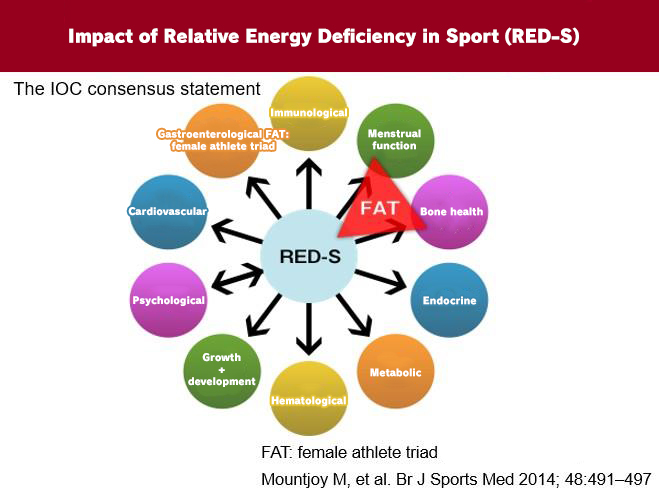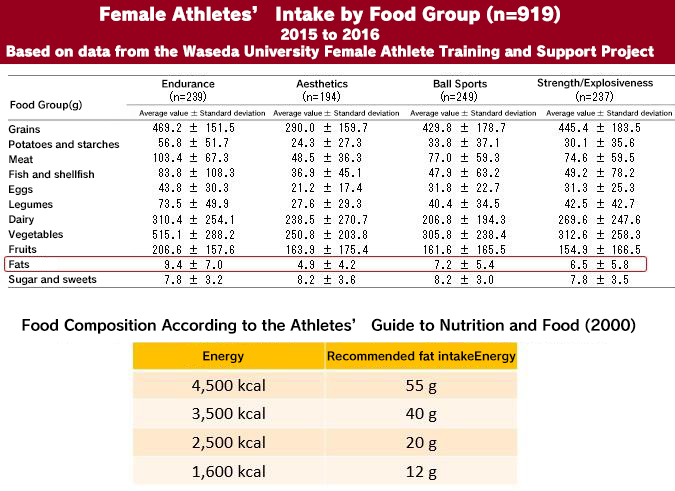

Female athletes lead a competitive lifestyle that presents various problems. In 1992, the American College of Sports Medicine (ACSM) named eating disorders, amenorrhea, and osteoporosis as the Female Athlete Triad (FAT), which are common health issue for female athletes. This raised the level of concern for problems faced by female athletes. In 2007, FAT was significantly revised to introduce a new concept stating that reduced energy availability (EA) would cause functional hypothalamic amenorrhea and lead to osteoporosis. EA is defined as the value obtained by subtracting the amount of energy consumed due to exercise from the total daily energy intake and dividing it by the fat free mass (FFM). A continued state of low energy availability (LEA) below 30 kcal/kg FFM/day is said to cause amenorrhea and decreased bone density. Furthermore, in 2014, the concept of Relative Energy Deficiency in Sport (RED-S) was presented as consensus statement by the International Olympic Committee (IOC). The statement clarified that LEA affects various physiological functions regardless of gender and is a factor that impairs performance. This means that LEA is cause for concern among male athletes as well as female athletes.

Although various studies are needed to apply EA to Japanese athletes in the field of sports, it is certain that health problems in athletes are closely related to the intake of dietary energy. The results of a dietary survey of Japanese athletes show that many athletes suffer from a negative energy balance—this is true for both male and female athletes. The survey also indicated low levels of EA, revealing that male athletes with high physical activity tend to have lower EA than female athletes. Some athletes face problems such as suppressed energy metabolism, disruption of the endocrine system, and promotion of bone resorption.

When examining the energy-producing nutrient balance of fat for these athletes, although the amounts are within the appropriate range (20% to 30% En), there may be cases of insufficient intake because the athletes are already in a state of insufficient energy intake. Therefore, it may be preferable for athletes to evaluate intake based on the absolute value (intake per kg of body weight) rather than the energy-producing nutrient balance. The fat intake in relation to body weight is not high for either men or women. Increasing intake of vegetable oil may be one way to increase energy intake and improve EA.
In this lecture, I introduced data on the energy status and health risks of Japanese athletes. Furthermore, from the perspective of a certified sports dietitian, I introduced how to easily ingest energy and energy-producing nutrients from a normal diet. Some specific examples of utilizing vegetable oil and cooking oil include using margarine and sesame oil in cooking as necessary, adding an appropriate amount of Medium Chain Triglyceride (MCT) when cooking rice, incorporating fried foods such as tonkatsu (fried pork cutlets) into daily meals as appropriate, and cooking with vegetable oil and vegetables (eggplant, etc.) which absorb a large amount of oil. Appropriate use of fats and oils in daily diet will assist in eliminating energy intake deficiency, improving EA, and preventing LEA. I believe that training with an appropriate energy balance can contribute to improving competitiveness. I am promoting educational and information dissemination activities related to diet and nutrition for all people involved in athletics, including athletes themselves, coaches, managers, and parents.
|